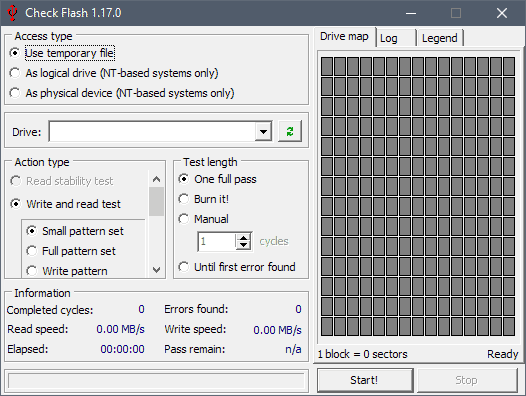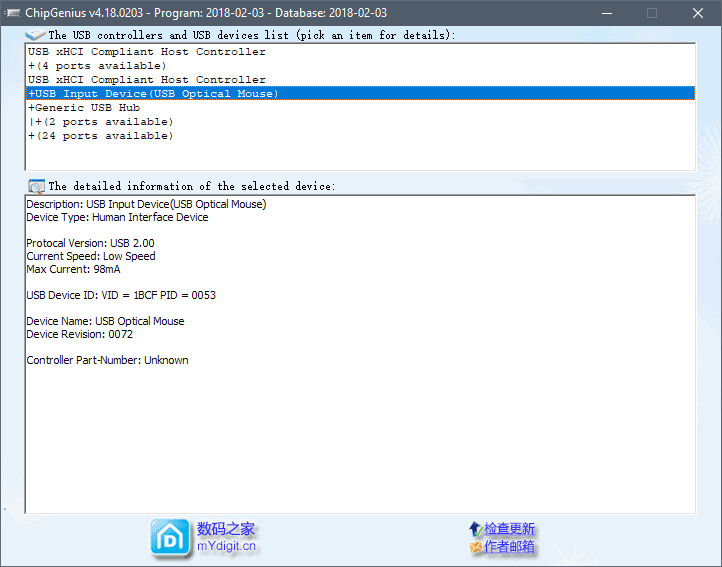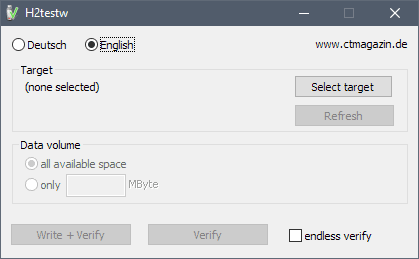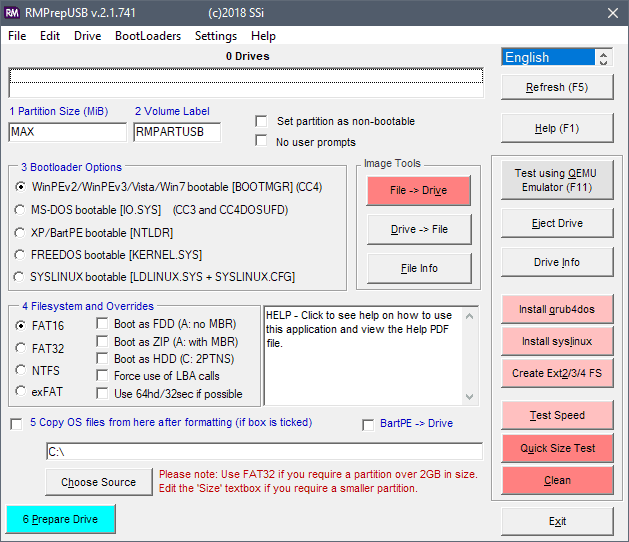8 Tools to detect fake storage devices

The rise of the global marketplace and sites like eBay or Amazon has made it easier for consumers to purchase computer hardware and for manufacturers and companies to sell hardware to users from around the world.
But the rise made those marketplaces attractive to criminals as well who use them to sell fake or counterfeit hardware to unsuspecting buyers.
While there may be indicators that a product is not genuine, for instance if it is offered at a (way) lower price than comparable products or if it promises storage capacities that don't exist yet, it is usually impossible to tell with certainty if a product is fake or not without making the purchase and analyzing it.
Fake Storage Devices
Fake Storage devices, USB Flash Drives, Solid State Drives, and other devices, often report larger storage quantities than what is actually supported.
If you check out the videos below, you will notice that one of the drives showed up as a 2 Terabyte Flash drive but could not even store 5 Gigabytes of storage during a test.
The products look legitimate on the outside which means that you can't confirm whether it is a real product or a counterfeit product by looking at it.
There are three main issues that you will experience when you use these drives:
- The storage capacity they show may be lower than what is actually available.
- Low quality parts may cause file corruption, data loss and other issues.
- Read and write speed may be lower than advertised.
While you may be able to tell when you hold an item in your hands, or try to copy data to it, it is also possible to use software to analyze storage devices for legitimacy.
Software to analyze fake storage devices
Tips:
- Make sure you back up any important data that is on the suspected counterfeit USB device before you run tests on the device.
- It is recommended to run tests at least twice or use at least two different programs to test the storage devices.
- You can try and fill the drive manually using large files to see if that is enough to reveal that its advertised storage size is not real.
Check Flash
The free software program Check Flash may be used to run several operations on connected drives. You may use it to check the read and write speed of connected drives, run a surface scan, or clean the full drive or partitions.
ChipGenius

ChipGenius lists all connected USB devices in its interface. It retrieves and displays information about the selected device as it lists hardware related information such as the USB protocol version the device supports, Flash ID code, and other information.
H2testw

H2testw is a portable program that may run tests on all available space or only a user defined size. It fills the space and reads it afterward to detect issues which it reports to the user.
Differences between advertised storage capacities and reported capacities suggest that the device is either broken or fake.
The program is very slow, unfortunately.
RMPrepUSB

RMPrepUSB's main purpose is to make USB devices bootable. The software includes a quick size test tool that you may run to verify the size of a connected USB storage device. Note that the test will delete any data that is on the disk at the time.
Tip: You may also use Fake Flash Test by the same developer.
Other programs you may want to try:
- BurnIn Test -- Can be used to write, read and verify large amounts of data to report storage issues and drive quality issues.
- F3 -- A cross-platform open source program that works similarly to H2testw.
- USB Memory Stick Tester -- Free open source program designed to test USB storage media for defects. You may use it to write test data to the disk and verify the operation.
YouTube Videos about fake USB storage devices






















Any idea how long Check Flash takes to run? I’m doing a full pattern set BTW. Think I may have just gotten duped into buying a cheap flash drive. Just saw that the so-called eBay store was only there a few mos.
Here is an online tool for test fake micro SD cards: https://knorke.tips/microsd_fake_test.php
I use True Capacity on Linux.
Also, we have to worry about hacked USB cables. They just aren’t fake, they have hidden chips in them for hacking! Here’s a chilling video from Hak5:
https://www.youtube.com/watch?v=Kfzk402uTLQ
Check out some of these C*****e knock-offs – one box (purported to be a WD disk) has 2 bolts for weight and a cheap & puny flash card & reader inside; the other is a battery pack but… 3 of the 4 batteries are filled with sand and in fact there is only 1 real battery. Moral of the story: only buy from trusted sources!
Inside Fake Mi Power Bank: https://www.youtube.com/watch?v=jus4l3WAGA8
Fake WD drive: https://www.youtube.com/watch?v=lAMhbqvOFyQ
ChipGenius will usually tell you what memory chips are present in the USB flash device and the total memory size. If it works, it is the fastest way to tell if you have a fake USB flash drive. This is not explained well or shown in the picture in this article.
But be careful where you get it from, many downloads for ChipGenius often contain malware.
A few years back I fell victim to this very same thing, falsely labeled flash drives that I bought on Ebay. The purchase wasn’t enough for me to bother with trying get the money back but I’m sure a lot of other people did the same thing and made the bad guys a good chunk of money. These days I only purchase from reputable sellers, do my research etc.. For those flash drives already in my possession, I’ve found using Check Flash useful in their actual capacity.
Regarding the first video: it may be possible to have a fake disk, i agree, but the error the man implies does not mean the disk is smaller. The error the OS gave comes actually from the formating. If it is FAT32 (maybe or even FAT) disk format (normally standard for USB flash disks) it means it cannot accept files bigger than 4 Gigabytes.
I bought a fake Samsung EVO once for a phone. Capacity was OK but speed was way off, the phone rejected it. No point in returning it, it was cheap but I bet the seller made a lot of money selling a bazillion of these things.
Thank you very much, this is a real problem !
Besides being counterfeit, there is a good chance there is malware on these devices.
how would that even work ? they put a exe on it ? only idiots would open that ….
you wont just get malware by plugging it in
Yes, it’s possible. Check out “BadUSB” for example.